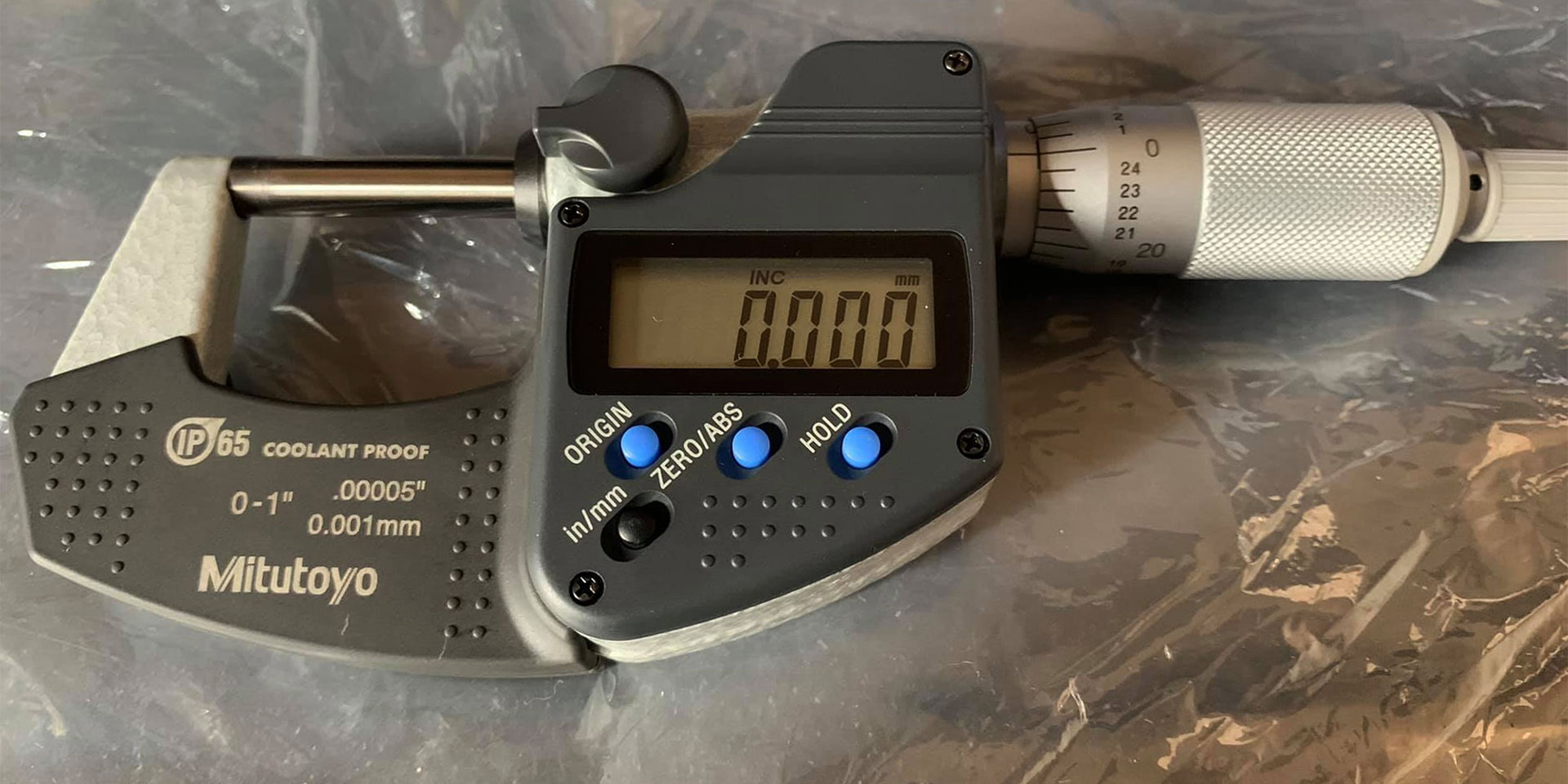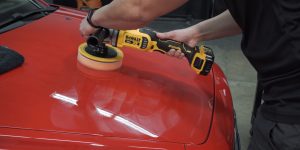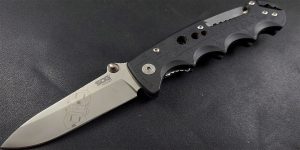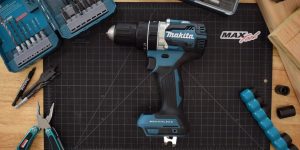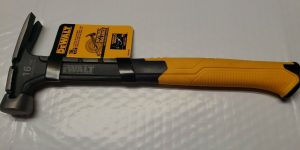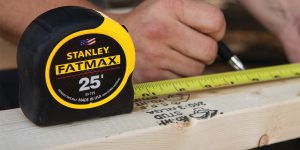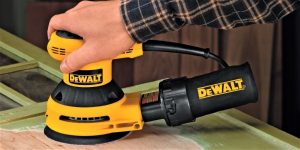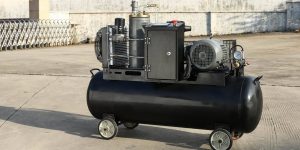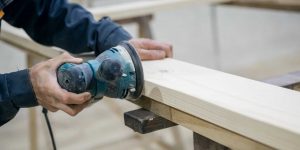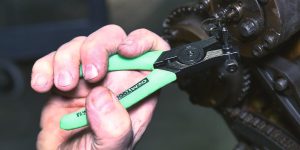If you need to measure tiny objects (for instance, the paper thickness or the wire diameter), you should use an amazingly precise measuring tool! The right solution for you will be a micrometer. The best micrometers measure down to 0.001 mm resolution – they are much more accurate than even digital calipers! But you should remember that different micrometers cover different tasks.
So, how to choose a tool that will meet all your needs? No worries! In this article, you’ll find comprehensive micrometer reviews and the buying guide, where I’m sharing everything you should know to make the right choice!
| Name | Range | Resolution | Accuracy | Review |
|---|---|---|---|---|
| Mitutoyo 293-340-30best outside micrometer | 0-1″ | 0.00005″ | ±0.00005″ | Review |
| Anytime Toolsbudget | 0-1″ | 0.0001″ | ±0.0001″ | Review |
| Mitutoyo 103-922set with standards | 0-1″, 1-2″, 2-3″ | 0.0001″ | ±0.0001″ | Review |
Best micrometer reviews
Outside micrometers
A micrometer for checking the thickness or diameter of tiny objects is known as an outside micrometer. It’s a precision scale with markings that make it simple to read an object’s thickness or width to the nearest 0.1mm. Outside micrometers are popular because of their great precision and resolution, as well as their ease of use.
Mitutoyo 293-340-30 – best outside micrometer

Work in harsh conditions? Need the most accurate micrometer? Mitutoyo 293-340-30 has got you covered!
This calibrated instrument provides you with 0.001-mm or 0.00005-inch resolution with a fantastic ± 0.001mm or 0.00005in precision. Furthermore, you can choose between inches and metric units on the bright LCD display, making it super convenient to use. Actually, for one purchase, you receive both a metric and a standard mic! Next, the micrometer uses an efficient SR44 battery, which lasts roughly 1.2 years.

The instrument does contain plastic parts, but they are oil- and scratch-resistant, besides carbide-tipped measuring faces make the mic as durable as possible. In addition, there is a ratchet stop to help provide uniform pressure for precise, repeatable measurements. Finally, this micrometer has IP65 certification, which means that this tool is dust- and water-resistant.
Mitutoyo 293-340-30 is the overall best micrometer available on today’s market since it offers a high degree of measurement accuracy, great functionality, durability, and long last use. You’ll definitely speed up your production with this instrument!
Key specs
- Range, inch: 0-1
- Resolution, inch: 0.00005
- Accuracy, inch: ±0.00005
Pros
- Heavy-duty
- Extraordinarily consistent and accurate measurements
- Straightforward to measure and read
- Easy thimble rotation
- Has convenient buttons.
Cons
- Comes in a cheap case.
Anytime Tools – budget

Anytime Tools is a well-known brand among industry experts – it produces high-quality, accurate instruments. And this micrometer is no exception.
It was designed with machinists in mind, featuring a well-balanced frame and thimble design for easier handling, improved readability, and overall user comfort. The ratchet thimble makes it possible to precisely apply the required pressure on the measured object, while the fixed thimble ensures no movement between the anvil and spindle. The laser-etched graduations and satin chrome finish provide superior precision and glare-free readings.

Additionally, the thick carbide anvils can measure even the most stubborn materials. And last but not least, with a measuring range of 0-1″, this micrometer is perfect for various applications.
Anytime Tools model is the best budget micrometer the market has to offer. In all honesty, I love this unit because it provides fine quality at a fraction of the price of higher-end instruments. Of course, more expensive micrometers from Mitutoyo or Starrett are a bit better, but most users won’t notice this difference.
Key specs
- Range, inch: 0-1
- Resolution, inch: 0.0001
- Accuracy, inch: ±0.0001
Pros
- Great resolution
- Perfect for home projects
- Totally accurate vernier scale
- True carbide faces
- Very affordable.
Cons
- Not for heavy use
- Made in China, but it’s still a quality product.
Mitutoyo 103-922 – set with standards

This is another excellent product from a reputable brand Mitutoyo. Mechanics buy this outside set for its high accuracy and resolution; it’s supplied with standards, which is also a huge benefit.
The set features range of 0’’-3’’, a resolution of 0.0001’’, and accuracy of +/-0.0001’’. It includes 1-, 2-, and 3-inch micrometers – a total of 3 instruments. The carbide-tipped anvil and flat anvil shape are very popular among buyers as they provide precision measuring. Next, the positive locking clamp ensures that measurements stay consistent each time. Last but not least, all tools from the set come with a spanner wrench for making adjustments to the thimble type friction/ratchet model.

If you are looking for a high-quality, large micrometer set with standards, you may end your search here! It’s accurate, well-calibrated, and durable. Yes, the price is a bit steep, but you buy the quality!
Key specs
- Range, inch: 0-1, 1-2, 2-3
- Resolution, inch: 0.0001
- Accuracy, inch: ±0.0001
Pros
- Provide accurate readings
- Hold calibration very well
- Quality construction
- Has a convenient fitted carrying case.
Cons
- A 2-3-inch micrometer is not certified.
Starrett T444.1XRL-1

The Starrett T444.1RL-1 is the ultimate micrometer for inch measurements, featuring a vernier scale on the sleeve that reads in ten-thousandths of an inch (.0001″) – it can be used for various industrial applications. Equipped with an insulated frame to prevent expansion and contraction caused by temperature or moisture changes, this tool is designed to be solid and reliable. In addition, the sophisticated sleeve design with staggered lines ensures easy reading, and the no-glare satin chrome finish protects against rust.

I love the feel of this tool! It rotates smoothly with only a smidgeon of resistance, preventing the measuring surface from jamming into the part you measure as they make contact. Finally, if you’re working with a lot of oil, the rough texture will be very helpful for good grip.
To tell the truth, I’m blown away by the price/quality ratio of the Starrett T444.1RL-1! This first-class product offers impressive features for more than reasonable money – it’s precise, sturdy, and convenient to use. You can’t go wrong with Starrett!
Key specs
- Range, inch: 0-1
- Resolution, inch: 0.0001
- Accuracy, inch: ±0.0005
Pros
- Well-made – feels very solid
- Smooth running
- Nice, comfortable weight
- Ratchet stop works perfectly.
Cons
- A friction lock may cause the micrometer to be rough after a while
- Produced in China.
Inside micrometers
An inside micrometer is a tool used to measure things like the inner diameter of holes with extreme precision. While a standard mic measures the exterior diameter of the bolt, and an inside micrometer measures the nut’s inner diameter.
Mitutoyo 145-193

The Mitutoyo 145-193 vernier inside mic incorporates caliper-type jaws and a vernier scale in inch units for accurate inner dimension measurements. The micrometer features 0.001-inch graduation.
This tool is composed of high-grade steel, making it extremely sturdy. Plus, it has a rust- and glare-resistant satin chrome cover. In addition, carbide-tipped measurement faces improve the instrument’s wear resistance. And last but not least, the locking clamp on the micrometer aids in the accuracy of measurements, plus it’s built to last forever.

Inside measurements are super challenging to make precisely. But Mitutoyo completely solves this problem – the 145-193 model is of excellent quality and accuracy. Actually, I’d say it’s a must-have for any tool-maker!
Key specs
- Range, inch: 0.2-1.2
- Resolution, inch: 0.001
- Accuracy, inch: ±0.00025
Pros
- Heavy-duty and accurate
- Ideal for measuring small parts
- Reasonable price
- Has a uniquely-designed convenient holder
- Made in the US.
Cons
- Not available in metric measurements.
Depth micrometers
A depth micrometer is a highly-sensitive instrument for measuring the depth of tiny bores & holes. This equipment contains a succession of unique parts that allow it to dial in an accurate measurement.
Mitutoyo 129-132

As I mentioned above, Mitutoyo instruments are high-quality & long-lasting. Their 129-132 model is no exception! To start off, it has an interchangeable set of rods for accurate measurements. The dual reading head helps to prevent errors through two independent scales, while a ratchet stop provides fantastic precision and accuracy.
The durable chrome finish lasts a long time and protects against rust, corrosion, and abrasion caused by filthy hands in the shop. Furthermore, marks are black, clear, and easy to read on the matt silver surface.

The mic’s turn-moving components are silky smooth, and the Mitutoyo quality is evident throughout. Finally, this instrument is supplied in a fitted plastic case, making it protected and convenient to move around.
Inside measurements are super challenging to make precisely. But Mitutoyo completely solves this problem – the 145-193 model is of excellent quality and accuracy. Actually, I’d say it’s a must-have for any tool-maker!
Key specs
- Range, inch: 0-6
- Resolution, inch: 0.001
Pros
- Works flawlessly
- 100% accuracy
- Ideal extended foundation for measuring larger cavities
- Well worth the money.
Cons
- Recalibration may be tricky; however, this is a problem with most depth mics.
Micrometers buying guide
You should know several key factors to buy a micrometer that will meet all your needs. So, before shopping around, read the following information:
Micrometer measurement range
A micrometer features a much smaller measuring range than a caliper. A one-inch range is the most typical. However, for equipment applications, there are various ranges: 0-1, 1-2, 2-3, 3-4, 4-5, 5-6 inches, and even up to 12 inches.
You might acquire a rough estimate of the length with another measuring equipment, such as a tape measure or ruler, and then use a mic to get a more precise measurement. Use the 2-3-inch ranging mic to measure correctly and precisely if the ruler reading is larger than 2 inches.
Resolution and accuracy of micrometers
Resolution and accuracy are crucial elements of measurement in metrology. So, do check them before picking a particular instrument!
- The resolution is the lowest distance that a meter can measure. The number of divisions on the micrometer’s scale is used to calculate this distance. As a result, the better the instrument, the lower the resolution.
- Accuracy refers to the degree of consistency between your mic measurement result and the actual number. The 1-inch version of the instrument must be similar to the 1-inch standard established by the international community. Furthermore, the term accuracy refers to the degree of precision with which a measurement may be made. You will come into an error that you will be unable to detect – this form of inaccuracy is known as uncertainty. It’s better if it’s not too big.
Mechanical vs. digital micrometer
When choosing a micrometer, there are two options: mechanical and digital. Both have their own benefits and drawbacks, so it’s essential to understand the difference before making a purchase.
- When using a mechanical mic, you must calculate the reading scales manually. For some individuals, calculating can be difficult and time-consuming. Aside from that, there’s always a chance of a user error. Furthermore, they are less accurate and have a lower resolution. Mechanical micrometers, on the other hand, are more cost-effective, do not require a battery, and can be used in any environment.
- When people need to perform quick and accurate measurements, a digital micrometer comes in handy. The most notable feature of the digital tool is its quick performance and ease of use; plus, it offers a higher resolution. However, digital micrometers are typically more expensive than their mechanical counterparts.
Quality of micrometer ratchets
Micrometer ratchets are an essential component of the instrument. They aid in the accuracy and precision of the measurement. When selecting a micrometer, consider the following factors to make sure the ratchet is fine:
- The material used should be sturdy and resistant to wear and tear.
- The design should be simple to operate and provide a secure grasp.
- To acquire the most precise measurements, the ratchet should be precise.
How to read a micrometer?
When using a micrometer, it’s critical to know how to read it. Here are several simple tips:
The scale on the micrometer typically goes from 0 to 25 or 50. The measurement in thousandths of an inch (or millimeters if you’re using a metric micrometer) is represented by the number on the scale.
If you’re measuring something that’s less than 1 inch, you’ll need to use the vernier scale. This scale is located on the side of the micrometer and goes from 0 to 9. The number on the vernier scale is the measurement in tenths of an inch (or in hundredths of a millimeter, if you’re using a metric micrometer).
It’s critical to align the zero point on the vernier scale with a line on the main scale for the most accurate measurement.
How to calibrate a micrometer?
To calibrate a micrometer, you’ll need to use a calibration block. This is a small block that has been calibrated and has a known thickness. Here are a few steps to calibrate a micrometer:
- Loosen the screw on the back of the micrometer head.
- Place the calibration block between the anvil and the spindle.
- Tighten the screw on the back of the micrometer head.
- Adjust the thimble until it reads the correct thickness of the calibration block.
- Lock the screw on the back of the micrometer head.

